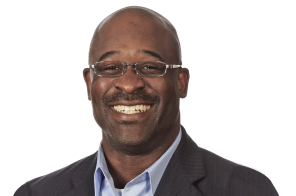“If you're trying to achieve, there will be roadblocks. I've had them; everybody has had them. But obstacles don't have to stop you. If you run into a wall, don't turn around and give up. Figure out how to climb it, go through it, or work around it.” —Michael Jordan
My emergency department (ED) in Selma, Calif., recently faced a spacing emergency when the number of our ED patient beds was reduced from 24 to 10. We had no choice or advance notice and about a day to prepare. We had to act and adapt quickly, because certainly our volume wasn’t reduced to help us with our transition. With limited resources and no increase in staff, we had to achieve the same results working with less. To accomplish this, I tried to expand my own productivity, and at the same time I focused on building our team through communication, motivation, and integration.
We were not only able to continue to serve the same number of patients, but our turnaround time to discharge (TAT-D) actually fell from 125 minutes to 108 minutes. I believe that beds by themselves don’t make people efficient. Instead, being part of a team that communicates well and shares leadership, vision, and ambition is what promotes efficiency; and this is what enabled us to increase our performance during this challenge. We were able to galvanize enthusiasm and to shift the culture in the ED toward increased teamwork. We did not let the number of beds dictate to us how we would do our job.
Part of the spirit in which I approach a challenge like this comes from what I saw in Michael Jordan over the years. He has always been an inspiration for me. I played college basketball, and before I stopped growing I had been hoping to play in the NBA. I try to bring some of Michael’s grit and competitiveness to what I do. I recently had the chance to shoot baskets with Michael and I told him just that.
Michael’s coach Phil Jackson said about Michael, “(I hope others) will be influenced by Michael’s demeanor and by his sense of unselfish competitiveness. More than his championship rings, I hope this will be Michael’s legacy.”
I was recently approached to talk about physician leadership and how it can help with the challenges we in medicine face today. My team and I put together this top ten list, I would be really interested to hear your comments and thoughts on this.
1. Lead by example. Never ask somebody to do something you will not do yourself. (Does anybody remember “the flu game” On June 11, 1997, Michael was told by the trainers he was too sick to play and he was taking intravenous fluids before the game, and he still scored 38 points and led the Bulls to a victory in the NBA finals.)
2. Build your team. Get people with the right vision, attitude, and skills on the bus.
3. Get to know your team. Think about whom you’re talking to and what motivates each member of your team. (I’m sure it wasn’t easy for Michael to integrate colorful characters like Dennis Rodman into the team, but they all came together and flourished.)
4. Collectively develop and announce team goals. Get input from the team and determine what the team’s goals should be. Then, drive the bus.
5. Empower the visionaries. Share leadership tasks with those who have vision and ambition. (We all remember how Michael set up Steve Kerr for the game winning shot that enabled the Bulls to defeat the Suns in the NBA finals).
6. Create team consensus through common understanding. Help each team member understand why the goal is important and how it benefits the team.
7. Take naysayers head on. Give your team opportunities to air negative feelings and discuss issues.
8.Communicate often—individually, and as a team. Text. Call. Meet.
9. Manage morale and build culture. Know when to push and when not to. Hold yearly retreats, holiday parties, etc.
10. Remember: Your positive energy is palpable! Your team will mirror your effort, energy and enthusiasm.
We didn’t just accomplish what we did with leadership and talk. We were able to implement key TAT-D innovations. As the team came together with these new programs, we sent out congratulations to the team and to individuals via email in order to maintain and boost morale.
I feel ready for our next challenge, and for the next one after that I believe our team will be ready for a “3-peat”, just like the Chicago Bulls. Given all the resource challenges we have in the Acute Care Continuum going forward and how important the stakes are, I say it’s “game on.”























